Did You Develop Eczema Suddenly? Me Too. Here Are 11 Tips That Helped.
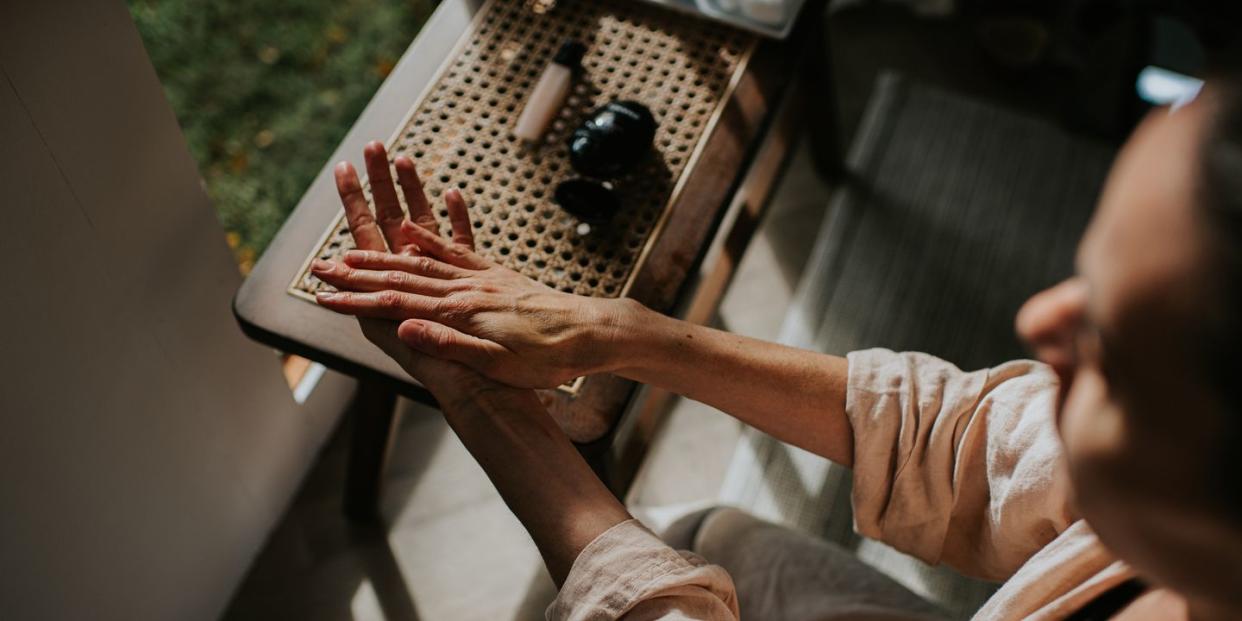
"Hearst Magazines and Yahoo may earn commission or revenue on some items through the links below."
In a September 2020 Instagram post, actress Elle Fanning captioned a trio of images, “Eczema but make it eye shadow,” in which pinkish spots of eczema do indeed look intentionally painted onto her eyelids. The comment section flooded with remedies, product recommendations, sympathetic encouragement, and notes on followers’ similar flare-ups.
My skin’s internal eczema makeup artist isn’t as masterful. A few months after Fanning’s post, I awoke with painfully swollen, raw eyelids and under eyes. Without warning, I developed eczema overnight at age 35. (Not so much as a written notice or invitation—incredibly rude.)
Turns out, I’m not alone. Late-onset atopic dermatitis is a very common chronic inflammatory disease, Camille Howard-Verovic, a board-certified dermatologist in New York City, says. How common? According to the National Eczema Association (NEA), 31.6 million people in the United States have eczema. That means 1 in 10 individuals will develop eczema in their lifetime, with prevalence in early childhood. Though the association notes that 1 in 4 adults report adult-onset symptoms.
Eczema is simply a bucket term describing irritated, inflamed skin, Heather Rogers, a board-certified dermatologist, the founder and CEO of Doctor Rogers Skin Care, and cofounder of Modern Dermatology in Seattle, says. There are seven different types of eczema, the NEA notes, with atopic dermatitis being the most common.
We honestly don’t really know what causes eczema. But it can be triggered by a handful of sources, including aging, change of seasons, diet, stress, hormones, an overactive immune system, alcohol, and skincare products. But most skin conditions are multifactorial, Daniel Whitby, the chief scientist for the new skincare brand Soho Skin, notes. “There is not one cause or trigger which can be focused on, often making them unpredictable,” he adds.
One of eczema’s newest noted triggers? COVID. Science isn’t exactly sure what could be causing the link between the two, whether it be stress, inflammation, or any other serious woe associated with the virus. There’s been a spike in hand-related eczema especially because of the necessary rise of handwashing and sanitizing. Both Rogers and Howard-Verovic have seen patients with worsening inflammation in the form of eczema and rosacea-like flares that they contribute to COVID.
Eczema’s appearance can be as multifaceted as its triggers. It can look different for everyone, but commonly eczema is usually itchy (sometimes so painful you feel the desire to itch until skin bleeds). Symptoms can also include dryness, inflammation, roughness, oozing, and/or swelling.

“Eczema can appear red in lighter skin, whereas people of color may experience eczema as ashen skin, gray skin, darker brown, or purple in color,” the NEA reports. Alarmingly, people of color are at a much higher risk of developing atopic dermatitis, and Black Americans are specifically more likely to experience severe symptoms. (Experts think genetics and environmental factors may be leading factors.) In fact, the National Health and Nutrition Examination Survey, which evaluates the health and nutritional status of adults and children in the U.S., found that 19.3 percent of Black children have atopic dermatitis, compared to 16.1 percent of white and 7.8 percent of Asian children.
As science progresses, so does our understanding of skin conditions. Recently, experts are noting a link between the skin barrier and eczema. “An impaired skin barrier is a repeat thread in the pathogenesis of eczema,” Howard-Verovic says. Having a healthy barrier gives the skin the best chance to overcome skin problems, Whitby adds.
All this said, there is no shame in experiencing a chronic skin condition. But it may be incredibly painful—physically and emotionally. In a 2020 study analyzing the psychological impact of skin diseases, people experiencing eczema, psoriasis, and other skin conditions were more likely to have depressive symptoms, as well as feelings of isolation, loneliness, and overall “lower quality of life” compared to those without skin conditions. Atop those dispiriting emotions is the (almost always fruitless) never-ending search for that holy grail product that’ll clear inflamed skin once and for all. The pain of a skin condition is not to be understated. “When it’s really bad, it hurts to even put water on it,” Amy Liu, founder and CEO of eczema-focused makeup and skincare brand Tower 28, says. “It’s very hard to not be able to count on your skin, and I’ve woken up many mornings afraid to look in the mirror.”
Most patients with eczema can benefit from the guidance of a board-certified dermatologist. For any skin concern, it’s always best to consult with your doctor. That said, access to medical professionals is not readily available to everyone. Here, I ask dermatologists, brand founders, and scientists for the best products, tips, and routines to aid in current flare-ups, recovery, and perhaps even prevention.
1. Try an Over-the-Counter Anti-itch Cream
According to my dermatologist, I have a mild case of eyelid eczema, or as he medically describes it, “periorbital dermatitis.” His first treatment recommendation is using an over-the-counter hydrocortisone cream (the unscented version you’ll find in any drugstore) twice a day until irritation dissipates. You can even apply 1 percent hydrocortisone cream preventatively, he suggests, a few times a week around common flare-up zones, to attempt to potentially curb future irritations. This preventive methodology has worked wonders for me personally.
2. Avoid Fragranced Formulas
“Fragrance is disastrous for eczema and sensitive skin types as it incites inflammation that can have both immediate and long-term effects,” Desiree Stordahl, the director of applied research and education at Paula’s Choice, says. Ingredients on a label will be listed as perfume, fragrance, or essential oils. Yep, sensitive skin should avoid essential oils. Synthetic fragrance is problematic—but so are natural forms of fragrance. “There is nothing wrong with essential oils for skin with a working skin barrier, but for sensitive skin, it can be incredibly irritating,” Liu adds.
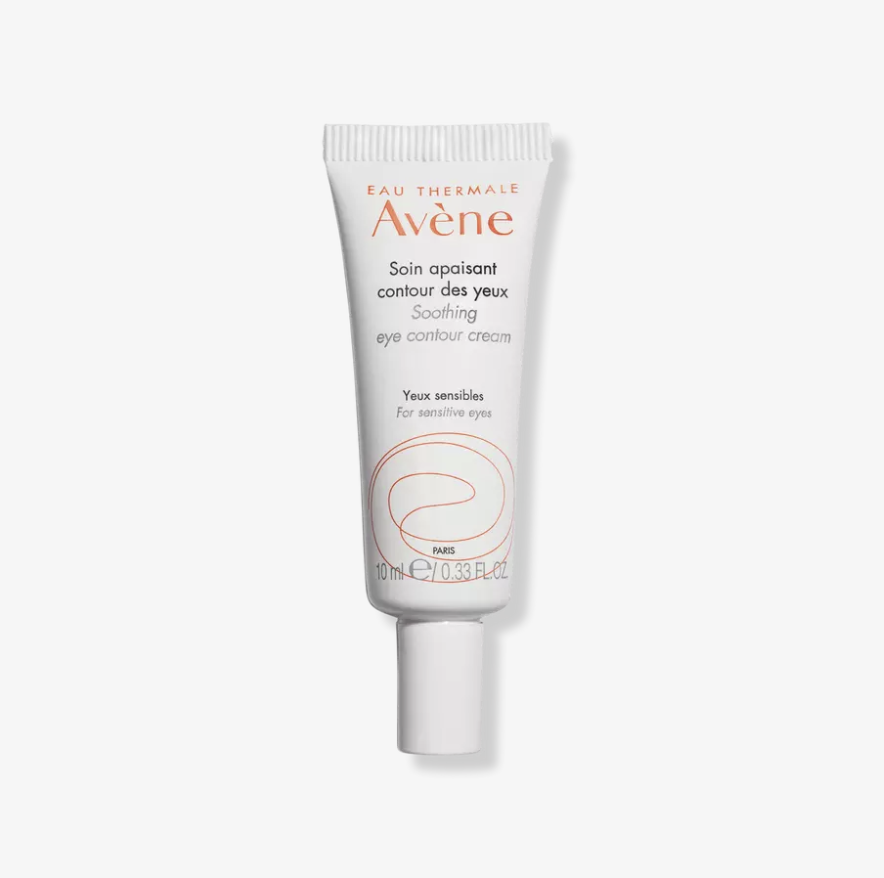
Avène Soothing Eye Contour Cream
ulta.com
$27.00
ulta.comWhen in doubt, trust your nose (and intuition) and double-check product labels. “Shockingly, sometimes even products labeled ‘fragrance free’ contain sneaky forms of fragrance, so you have to do some detective work,” Stordahl says.
Those with periorbital dermatitis will find it especially vital to use an unscented eye cream. I use NEA-approved Avene Soothing Eye Contour Cream morning and night. Then “slug” it with Doctor Rogers’s phenomenal and multipurpose Restore Healing Balm. (I’ve also found this duo has completely eradicated my chronically dry under eyes too.) Designed for highly sensitized skin, the petroleum-free product has been awarded the NEA’s coveted Seal of Acceptance, as has every other product in her line.
3. Check Your Ingredient List
Reference the NEA’s extensive ingredient guidelines as a way to help navigate beauty aisles, Liu suggests. Additionally, Stordahl recommends avoiding other common irritants like denatured/SD alcohol, citrus, and cooling ingredients, like menthol and mint.
4. Reexamine Makeup
Perhaps you’ve overhauled your skin care routine in favor of non-irritating products, but have you done the same for your makeup drawer? Common makeup ingredients can be incredibly irritating for the skin, Liu notes. (Liu’s Tower 28 is the first and only brand to 100 percent adhere to the NEA’s guidelines.) Triggers to avoid in makeup include mica, dyes, essential oils, and fragrance.
5. When in Doubt, Go Gentle
“How you cleanse skin during a flare-up is vitally important both on the face and the rest of your body,” Stordahl says. For both the face and body, grab a mild, unscented, hydrating cleanser, like La Roche-Posay Toleriane Hydrating Gentle Face Cleanser. Avoid harsh cleansing products at all costs. Extend this level of gentle care to your other products too. For example, zinc-based sunscreens have been shown to be more gentle for sensitive skin, Rogers notes.
And it may feel tempting to scrub away the itch with an exfoliant, but don’t. Whitby recommends avoiding both chemical and physical exfoliants during a flare-up. This extends to your body too. Howard-Verovic says to refrain from exfoliation via loofah or washcloth in common breakout areas.
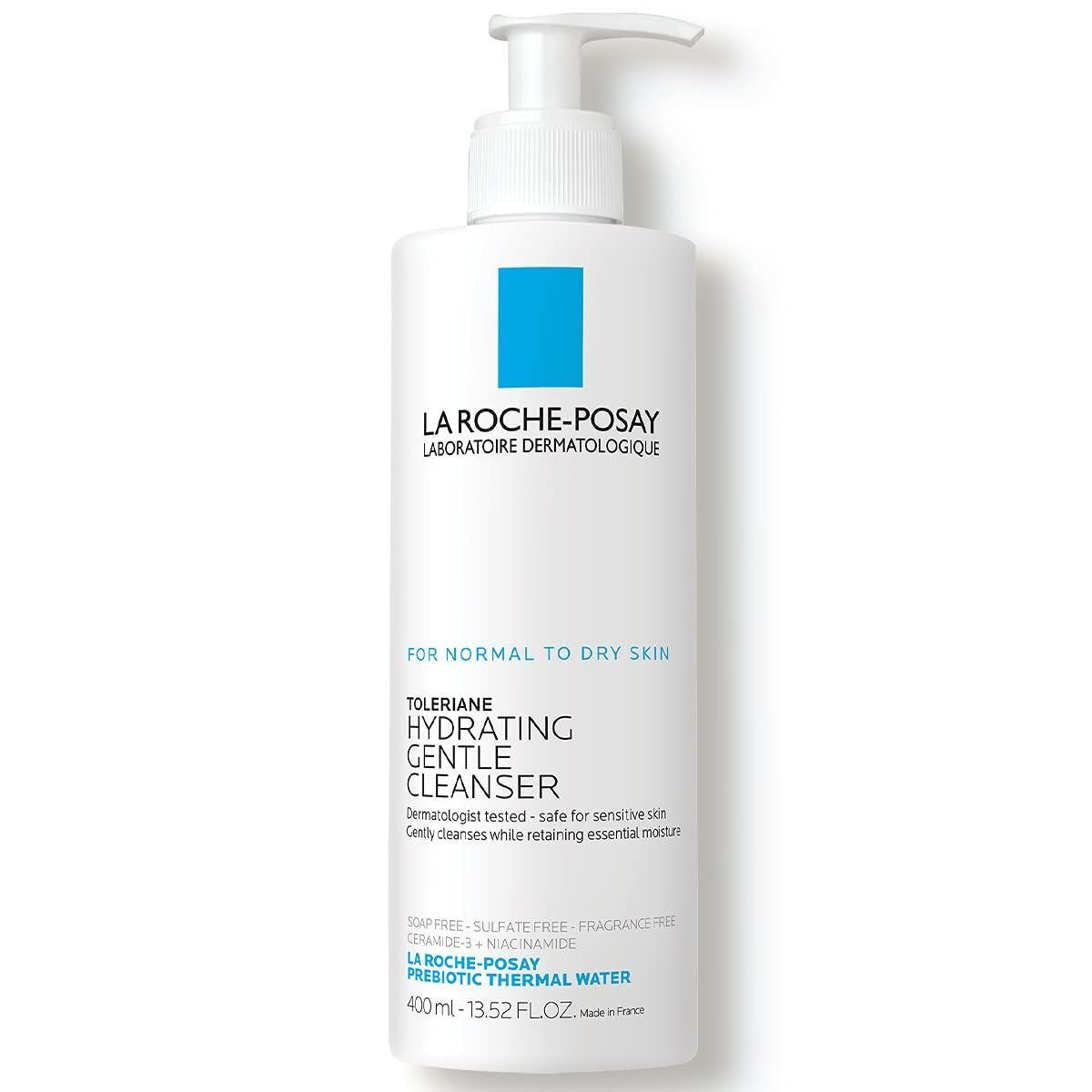
La Roche-Posay Toleriane Hydrating Gentle Face Cleanser
amazon.com
$15.99
amazon.com6. Know Your Triggers
As mentioned above, we don’t yet understand the root causes of eczema, but we know common triggers. Whitby suggests tracking flare-ups in hopes of identifying the factors that impact skin most. What season is it? What did you eat or drink? Were you stressed? It can be time-consuming to analyze, but zeroing in on triggers can help lessen the intensity of eczema flare-ups—and maybe even minimize them altogether.
Most importantly, though, sometimes we can do everything right and still get a flare, Howard-Verovic says. “It is important not to feel guilty, it happens,” she adds.
7. Follow the Rules
If you find your flare-ups increasing in pain and frequency, it might be time to consult a physician, if possible. “If you are really inflamed, a prescription from your doctor for a topical steroid may be necessary,” Rogers says. This is very safe and effective—as long as you use the steroid only for the prescribed length of time, she adds. Howard-Verovic reiterates how important it is to follow your doctor’s application instructions carefully. “Topical steroids are not for long-term use,” she says. Misusing topical steroids can worsen skin drastically.
8. Add a Serum to Your Routine
Ceramide-Heavy Serums
We know a healthy skin barrier is not only important for the overall health of skin, but it also might help curb eczema flare-ups (and even acne). Whitby suggests looking for serums that contain niacinamide, ceramides, and a blend of seed oils (for example jojoba and sunflower), which are high in omega fatty acids. Ceramides are particularly essential for a strong, healthy skin barrier.

Great Barrier Relief
kravebeauty.com
$28.00
kravebeauty.comIn the name of healthier skin and potentially fewer flare-ups, I’ve been using KraveBeauty’s beloved Great Barrier Relief whenever my skin feels slightly inflamed. The healing serum is designed to address sensitivity and strengthen the skin barrier—and the formula has that enviable trio of ceramides, oils, and niacinamide to help soothe irritation.
Soho Skin’s entire line is designed to restore barrier function, as well as accelerate skin renewal and help support the skin’s microbiome post-disruption. Half of the brands products feature The Concentrate, a complex that includes fermented ingredients to repair the skin barrier and glycogen, which has been shown to promote ceramide production in the epidermis.
Antibacterial Serums
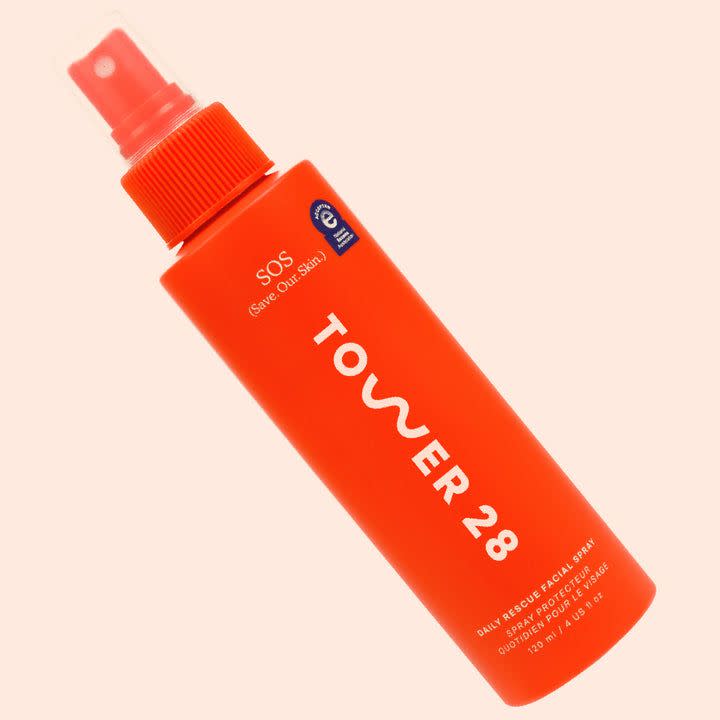
SOS Daily Rescue Facial Spray
tower28beauty.com
$28.00
tower28beauty.comAdversely, studies have shown antibacterial ingredients, like hypochlorous acid, to be beneficial as an adjunctive treatment for eczema. Just as bleach baths are carefully recommended by the American Academy of Dermatology, hypochlorous acid works in a similar, much more foolproof, way.
Hypochlorous acid, which is used to help kill a specific type of staph bacteria commonly associated with eczema, is one of the only ingredients in Tower 28’s best-selling SOS Daily Rescue Facial Spray. “The real shift in my skin came when I discovered hypochlorous acid,” Liu says. “It’s both anti-inflammatory and antibacterial, and helps defend your skin from harmful bacteria, reduce redness, and soothe any irritations—a complete game changer for my skin.” She credits hypochlorous acid with “single-handedly” getting her off her intensive steroid cream routine.
Additionally, hypochlorous acid has also been linked with killing the bacteria that can cause clogged pores and acne too.
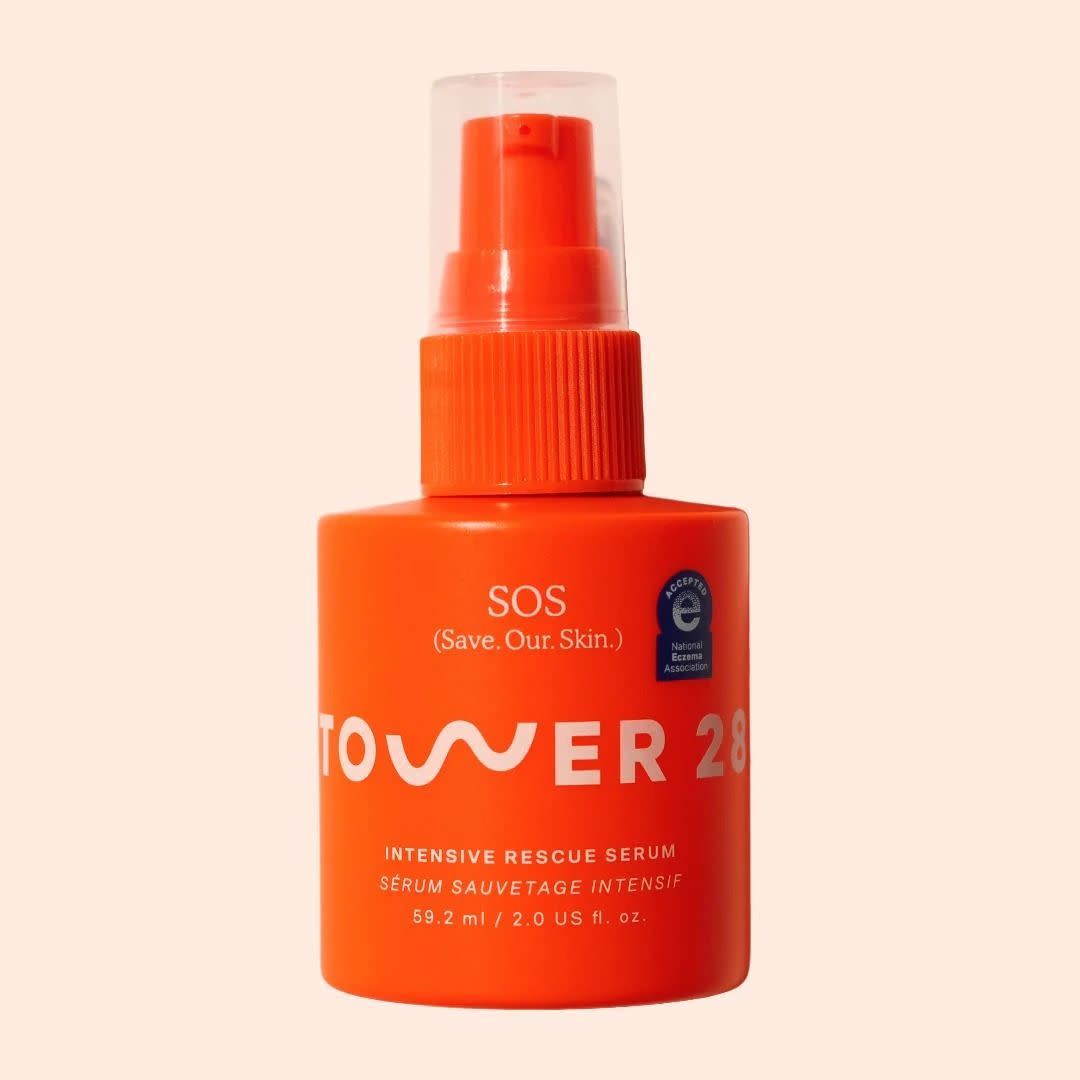
SOS Intensive Rescue Serum
tower28beauty.com
$34.00
tower28beauty.comTower 28 took its famed SOS Daily Rescue Facial Spray and turned it into a serum with a more concentrated dose of hypochlorous acid. The SOS Intensive Rescue Serum is cooling and purifying during a flare-up (but it’s also great for non-inflamed skin too), and the formula has received the NEA’s Seal of Acceptance.
9. Cut Actives Out
You might find it beneficial to pare down your routine to just a few healing products—especially eliminating or reducing active ingredients (perhaps temporarily or more long-term, depending on the frequency of flare-ups). “If your skin is flaring up, the first step is to stop all active steps,” Rogers says. “Yes, vitamin C and retinol are beneficial for your skin, but only if the skin is healthy enough to be able to deal with them.” If the skin is already inflamed, these products will only worsen things.
“Everyone, particularly those with sensitive and aging skin, needs to cut back on products and steps,” Rogers adds. She suggests looking for hypoallergenic products with fewer ingredients and no fragrance, and if using actives, like vitamin C or retinol, use lower percentages and utilize them less frequently.
10. Hydrate—Intentionally
One of the most important tools in your eczema-fighting arsenal is hydration. Howard-Verovic suggests applying moisturizer every single day, no matter what.
Sensitive skin desperately needs hydration; look for ingredients that replenish skin deeply, like emollients, glycerin, and hyaluronic acid. Additionally, the rest of your routine should be exceptionally hydrating too, Stordahl suggests. “Think milky toners, humectant-rich serums, moisturizing sunscreens, et cetera,” she says.
Also, it’s helpful not just to apply moisturizer daily, but to apply it within seconds of washing—on the face, body, or hands. “This is especially true for your hands, because soaps and hand sanitizers are notorious for triggering a reaction when you have eczema,” Stordahl says.
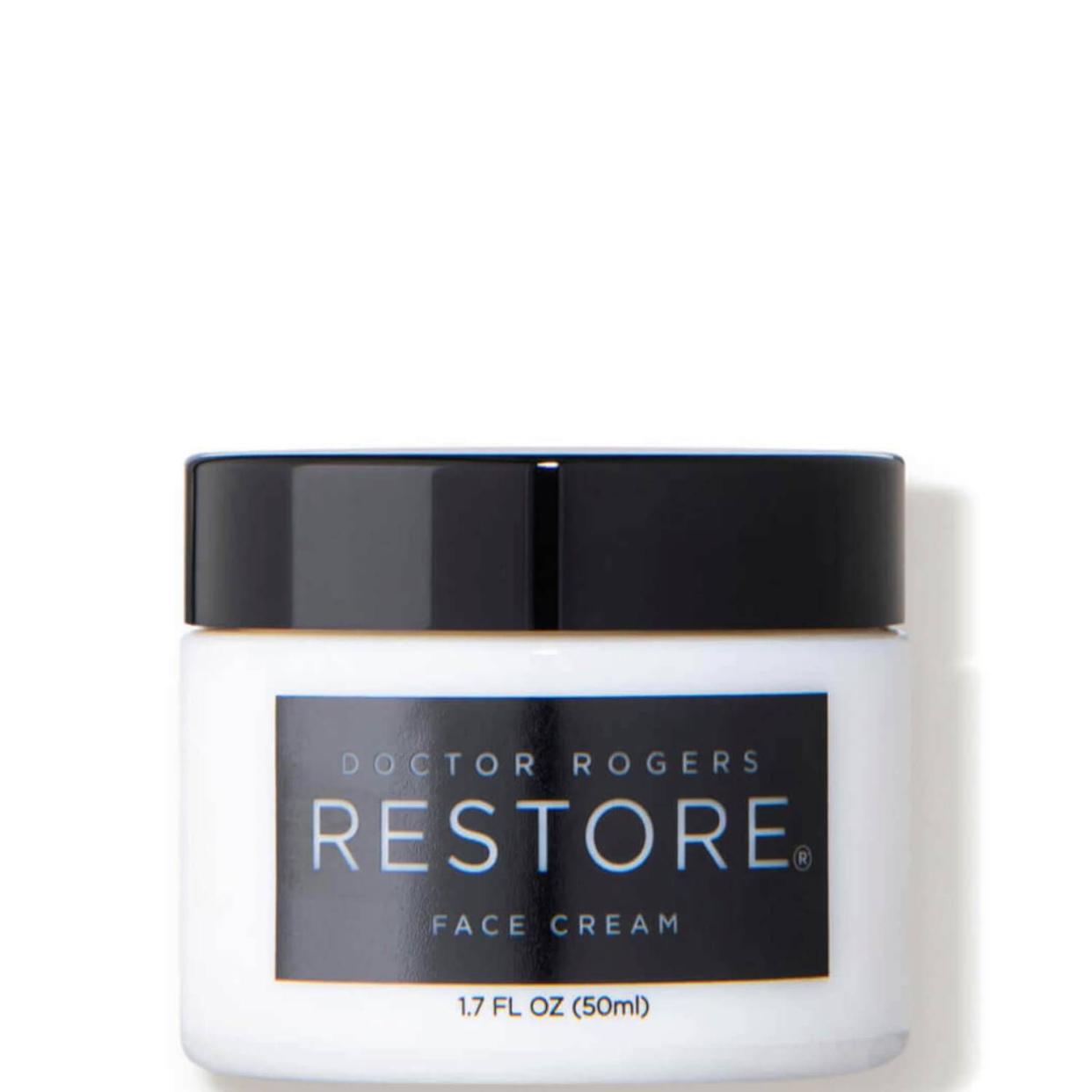
RESTORE Face Cream
dermstore.com
$72.00
dermstore.comI’ve used Doctor Rogers Face Cream for over a year, and it’s extraordinarily hydrating and calming. All the ingredients in Rogers’s line are not only hypoallergenic, but also biodegradable—a niche genre between sustainability and sensitivity. The cream can even double as an eye product.
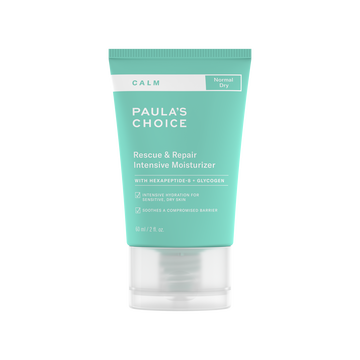
Rescue & Repair Intensive Moisturizer
paulaschoice.com
$33.00
paulaschoice.comOf course, CeraVe, Vanicream, Aveeno, and Cetaphil are suitable for sensitive skin, Rogers says. Check the ingredient list before purchasing, because some of the products do contain fragrance.
Speaking of calming, Paula’s Choice just reformulated its entire Calm line. The updated collection is now even more soothing and gentle, all while boosting skin’s hydration and barrier strength. The new Rescue & Repair Intensive Moisturizer contains a robust mix of barrier-repairing ingredients, like acetyl hexapeptide-8, an innovative peptide that helps skin recover faster.
11. Keep It Cool
Another vital step in aiding eczema-prone skin is keeping things cool—literally. Avoid prolonged contact with water and eliminate interactions with hot water entirely. This means skipping the long, hot bath and instead replacing it with a quick, warm shower. Additionally, a cool shower or an ice roller (or even an ice pack) may help calm itchy patches—or at least ease the desire to itch aggressively.
Is there a light at the end of this itchy tunnel? Does eczema ever disappear? “The propensity to react will never go away, and it often gets worse as we age, but we also get better at learning what our skin can and cannot handle, so the flares get fewer and farther apart,” Rogers says.
You Might Also Like
